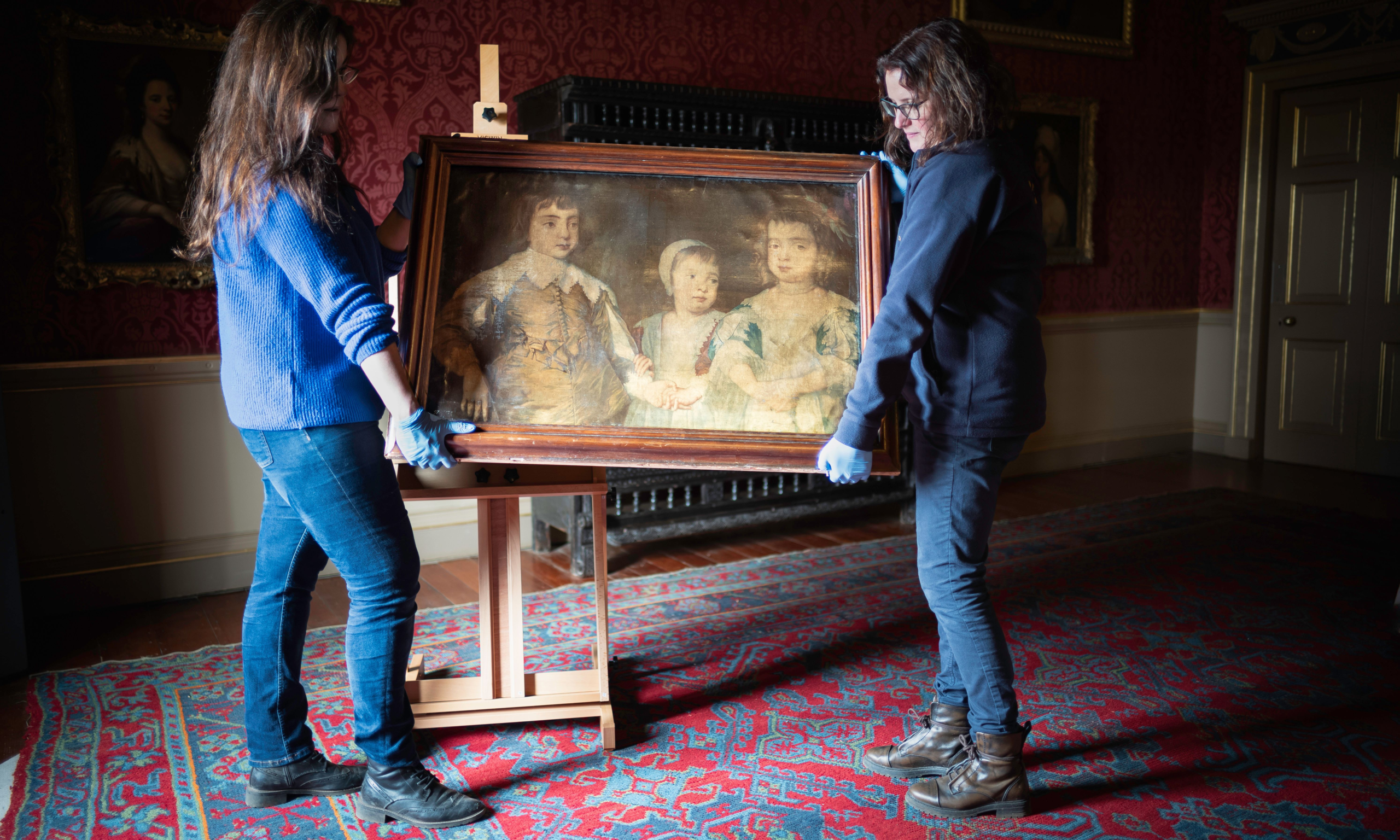Curators put Le Blons's mezzotint on show at Oxburgh Hall © National Trust. Photo: Mike Hodgson
A print which has hung in a dark corner under a staircase of a Norfolk mansion for at least 150 years has been taken off the wall for cleaning—and identified as an exceptionally rare early mezzotint by Jacob Christoph le Blon, the inventor of three- and four-colour printing.
The print, part of the collection at Oxburgh Estate in Norfolk, now in the care of the National Trust, had been wrongly catalogued since the 19th century as an oil-on-paper copy of Anthony Van Dyck’s portrait of the three eldest children of Charles I.
When conservators finally examined it more closely they realised it was something far more unusual, an 18th-century print by le Blon, who had trained as a painter but spent years experimenting with printing inks to develop a system of colour printing, using separate plates for blue, yellow and red superimposed to create the final print—which was then further hand coloured. His technique is the forerunner of the modern CMYK process, which uses cyan, magenta, yellow and black plates.
After moving to London in 1718 from his native Frankfurt, and adopting the name James Christopher, encouraged by George I he made prints of several paintings in the royal collection. His prints were expensive, highly valued, and considered important enough to be identified in inventories and wills. Only three examples were previously known of his print of the Van Dyck painting. The National Trust curator Jane Eade commented: “to have a discovered a fourth is really exciting, especially as it is the only version that remains hanging in its historic setting.”
Conservation work was carried out at the trust’s conservation studio at Knole in Kent, where a thick coat of 19th-century varnish, apparently applied while the print was framed and hanging at Oxburgh, proved particularly challenging. Paper conservators were only able to clean and thin it after determining that it could not be completely removed without damaging the original varnish and pigments. The peeling canvas backing was also repaired rather than replaced.
The print may have been acquired soon after it was made in 1721/22, by Henry Arundell-Bedingfeld. The Bedingfeld family have owned the spectacular moated brick Oxburgh Hall since it was built in 1482, and still live in part of the house; they were noted as Royalists and Roman Catholics.
Ilana van Dort, the collections and house manager at Oxburgh, said copies of the Van Dyck painting were known to be popular with Jacobite supporters, since the children include the future James II, the last Catholic monarch, whose exiled son James, known as “The Old Pretender” would make a failed attempt to take the throne in the Jacobite rising of 1715. She said there is evidence that Sir Henry was a secret Jacobite, and may have collected the print himself.
“Copies of this painting are known to have been popular with those sympathetic to the Jacobite cause and it would have been quite feasible that the print has spent its whole life at Oxburgh, although we lack enough evidence to prove it.”
The print is now back on display in the house, along with some very rare textile fragments recently found under the floorboards in recent building work.
The story of its rediscovery is told in a forthcoming BBC Hidden Treasures of the National Trust episode, screening and on iPlayer from 10 May.

